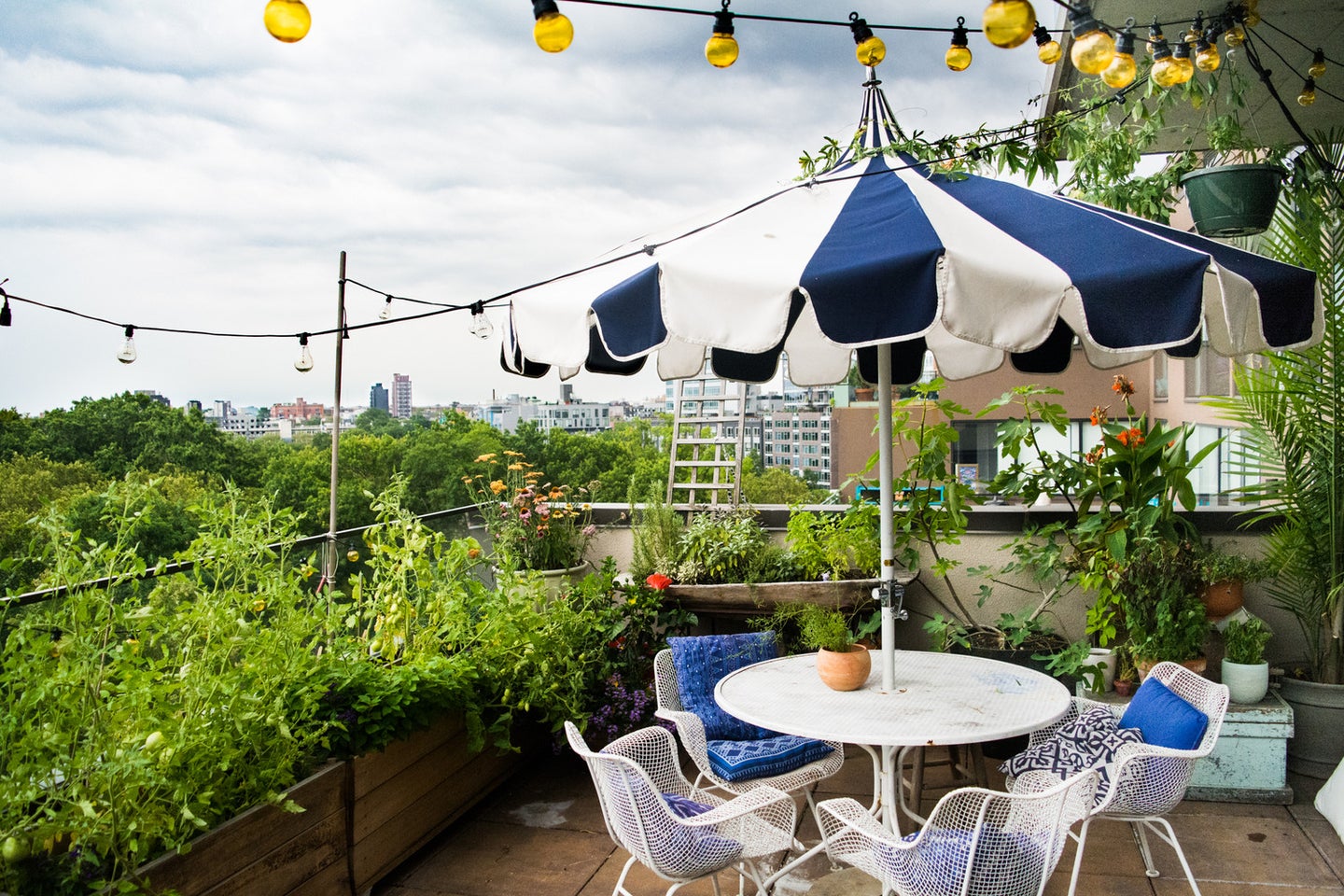How to Grow a Lush Garden In The City
Five rules every greenery-loving city dweller must follow.
Published Jul 17, 2017 3:51 PM
We may earn revenue from the products available on this page and participate in affiliate programs.
You and your partner have said your vows, run off into the sunset, and are on your way to everlasting domestic bliss. The registry items have been unpacked, the monogrammed towels are hanging up on hooks, and all your books and belongings have been merged. The inside of your home looks homey—but what about that concrete slab of outdoor patio space that’s just sitting there all grey and empty?
Time to call a landscape designer who can design an outdoor urban space that’s way cooler than your standard Stepford Wives-like boxwood hedges and hydrangeas. Enter: Jake Hawvermale of Urban Roots, a full-service, sustainable landscaping company, whose mission is to create innovative urban gardens. Here, Hawvermale offers five tips for newlywed city dwellers who are eager to get their wild green thumb on… but have no idea where to start.
1. Study The Light
Whether your outdoor space is a small stone slab outside your bedroom or a big rooftop patio, the most important thing to do is understand how much direct sun exposure your plants will get. “You want to know where the sun is coming from, how many hours of direct sunlight it gets, how strong the light is, and if it’s reflective,” says Hawvermale, an aficionado of all things green who grew up on an 80-acre farm in Connecticut.
“Every plant has a level of sun it likes and doesn’t like. Make sure you have a good understanding of your light exposure, as it will directly inform what plants you should buy. For example, if the light is low, go with with ferns and low light shrubs like astilbe and aucuba. But if the sun is powerful, the sky’s the limit. Roses, vegetables, and fig trees are all exciting options.”
2. Make A Watering Plan
“Planting an urban garden requires manpower and maintenance,” says Hawvermale. “The city gets VERY hot during the summer months, and you can’t always rely on rain like people in the country do. You need to come up with a plan to provide your plans with ample amounts of water daily. Commit to making it happen.”
3. Go For The Greenery
“There are endless amounts of plants to learn about,” says Hawvermale, “but most important is to identify what kind of plants you want to grow and what function you want them to serve. Some of my clients only want edibles—raspberries, blueberries, strawberries, tomatoes, cucumbers. Others are into perennials flowers like Black-eyed Susans, Yarrow, and Aster—these are sturdy, unfussy plants that die at the end of the season and sprout again the following year. Herbs like thyme and rosemary are very hearty, and can last through the winter. Sage smells great and basil, of course, is the classic summer herb. I mean, pesto tastes great on everything.”
4. Embrace Imperfection
“I prefer when my clients are willing to experiment and think outside of the box,” says Hawvermale. “There’s a good chance that the aspects of your space that seem odd or ugly, like pipes and brick walls and AC units, are actually your biggest assets. It can be really challenging to figure out how to incorporate those elements into your space, but if you keep an open mind, it can also be beautiful.”
On my own terrace in Greenpoint, Brooklyn, Hawvermale designed the edible garden you see in the pictures here. I had a lot of found vases and vessels, and Hawvermale created a hodgepodge lush paradise that was not only beautiful, but functional. “We ended up building boxes for herbs, growing tomato plants out of repurposed wooden benches and planting raspberry and blueberry bushes in large clay pots,” he says. “Remember, at the end of the day, there’s no such thing as a perfect garden. Take whatever space you have and make it into a living breathing green biosphere that you can hang out in with family and friends.”
5. Be Mindful Of Mother Earth
“Take into consideration the needs of the natural environment around you,” Hawvermale advises. “Plant things that will benefit the local wildlife—like berry shrubs that birds can eat. And perennials like echinacea and yarrow are great for pollinators like bees, butterflies, and beetles to enjoy. The goal is to keep the whole eco-system healthy —your garden will thrive as a result.”
Couch by Pottery Barn, table, chairs and textiles are vintage.
